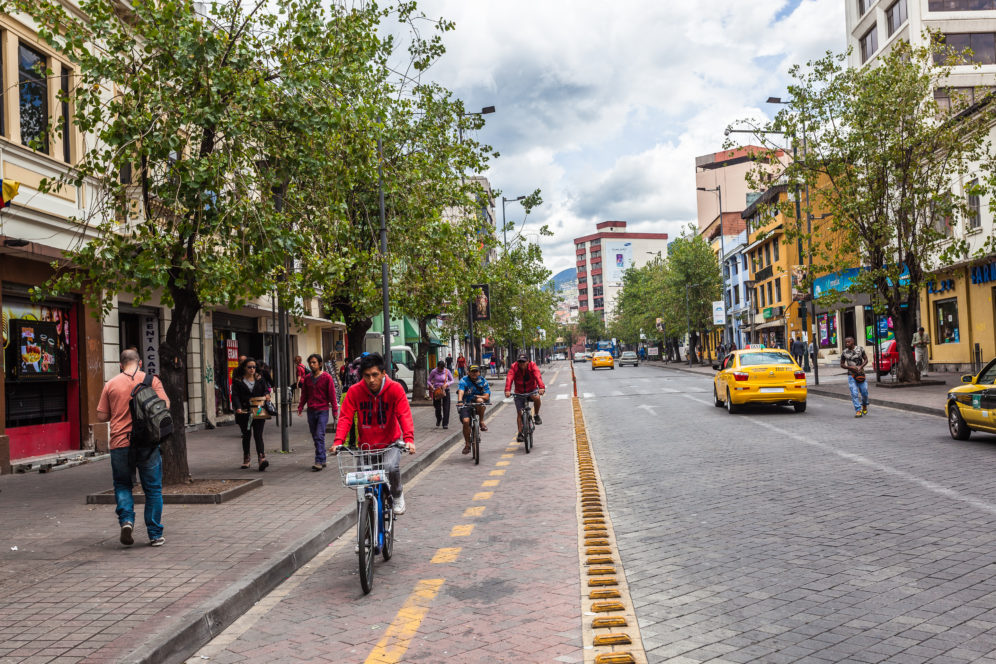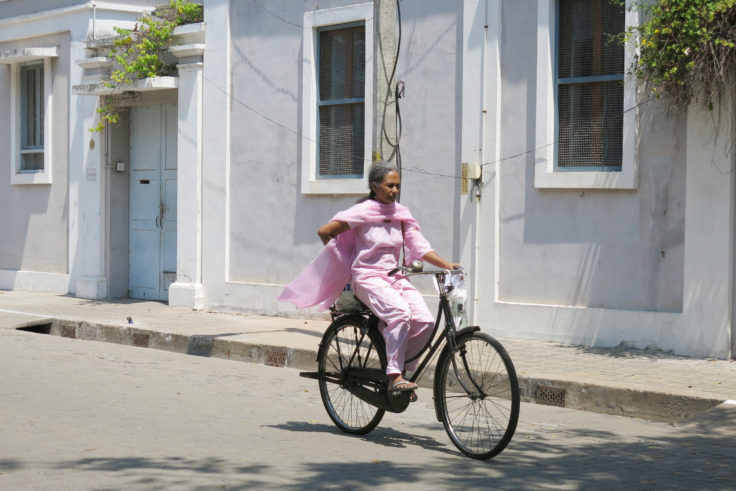
January 19, 2022
2022: The Year of the Bicycle
Since the onset of the COVID-19 pandemic, we have seen shifts in how and where people travel. Low vehicle volumes during initial lockdowns showed what city streets could look like without traffic: spaces for walking and cycling, play, and outdoor gatherings. However, fewer cars on the road also invited reckless driving and speeding, which have wrought havoc on many streets – pedestrian deaths were significantly higher in 2021 and 2020 than in past years. Many cities have committed to making permanent temporary cycling infrastructure implemented during the pandemic, which has supported large increases in cycling and additional commitments to improve cycle lane networks.
As we begin 2022, the third year of the pandemic, it is crucial to galvanize the momentum around cycling since 2020 and shift temporary measures into permanent ones.
We know that building and redesigning cities to work well for cyclists and pedestrians instead of cars not only reduces harmful emissions which contribute to climate change, but fundamentally prioritizes our most resilient and adaptable forms of transport. While building more connected, protected lanes for all people to cycle safely is a critical piece of the puzzle, another, perhaps more challenging piece must be addressed: changing the narrative about who uses bicycles and for what purpose.
Bicycles are not just for young, wealthy, physically fit men
In many cities, bicycles are seen as “for” young, able-bodied men because this group tends to make up the largest share of riders particularly in recreational cycling. Assuming all cyclists are young, middle to high income, fit men overlooks the fact that women, older adults, and families with children also rely on bicycles to get around. In fact, these groups would use bicycles for more trips if safer, calmer spaces were available to ride and more types of bicycles (like e-bikes) were easier to access and afford. Policy does not impact all people equally, which is why designing for all groups and their specific needs will enable cities to better adapt to, and support, a diverse range of cyclists.

Bicycles are not just for recreation
While bicycles and, often, bikeshare systems provide opportunities for outdoor recreation, they should not be solely viewed and planned for as recreational devices. Aside from personal transport, bicycles have been used by informal street vendors for decades, and are increasingly used for local commercial deliveries. As demand for e-commerce grows, higher volumes of goods present logistical challenges for delivery companies; that’s why large corporations like Fed-Ex and DHL are piloting the use of e-cargo bikes for delivery from local warehouses to final destinations, avoiding traffic congestion and reducing greenhouse gas emissions. When roads were blocked with debris and power was disrupted following a massive earthquake in Mexico City in 2017, people turned to bicycles to make essential trips and distribute supplies to support the recovery effort. In response to the COVID-19 pandemic, grassroots networks in Gugulethu, South Africa; Semarang, Indonesia; several Indian cities; Mexico City and New York City, among others used bicycles to deliver medicine, groceries, meals, and other supplies to vulnerable populations. We can infer that these bicycle-generated relief efforts could reach more people if more safe cycle lanes were in place.

Bicycles support more than short trips
Additionally, bicycles support the entire sustainable transport network by filling in gaps between modes. Often, bicycles provide first- and last-mile connections, or simply connections between transit modes that would otherwise be very long on foot. For example, in Jakarta, Indonesia cycle lanes that enable a 15 minute bicycle trip to the Harmoni BRT station make that station accessible to 400% more people than the population within a 15 minute walk. Easier, more reliable access to public transport means more people can consider using it for more trips.

Understanding that many different types of people use bicycles for many purposes is important, but how can cities actually start to shift perceptions around cycling? Here are four quick to implement, cost-effective actions:
- Car free days have been successful in cities like Guadalajara, Kigali, and Jakarta at encouraging people of all ages and abilities to come out on the street and gain experience cycling in a relaxed, safe environment.
- Bikeshare expands access to bicycles for those who do not own their own, and helps accelerate demand for more and safer spaces on the street to ride. Evidence suggests that bikeshare users cycle more often, and that bikeshare use can be a catalyst for purchasing a personal bicycle. Some bikeshare operators are even offering different rental options that work better for delivery workers.
- Quick-build cycle networks in cities like Seville, Bogota, and Buenos Aires quickly change the experience of everyday cycling and shift the priority (if only slightly) away from motor vehicles. Because low-cost, moveable materials are often used at first, there is flexibility for adaptation and adjustment if data and feedback indicate issues. Pop-up cycle lanes that connect to transit hubs can help more people consider alternatives to driving for longer trips.
- Social marketing helps raise awareness about cycle projects and initiatives, as well as their impact on people’s lives. Taking part in regional or global campaigns, like India’s national Cycles4Change challenge or ITDP’s Cycling Cities, which aim to improve cycling conditions as a way to combat major societal challenges like air pollution or climate change, can help build momentum towards longer term behavior change.

Sign the Cycling Cities pledge and learn more about ITDP’s Cycling Campaign.
